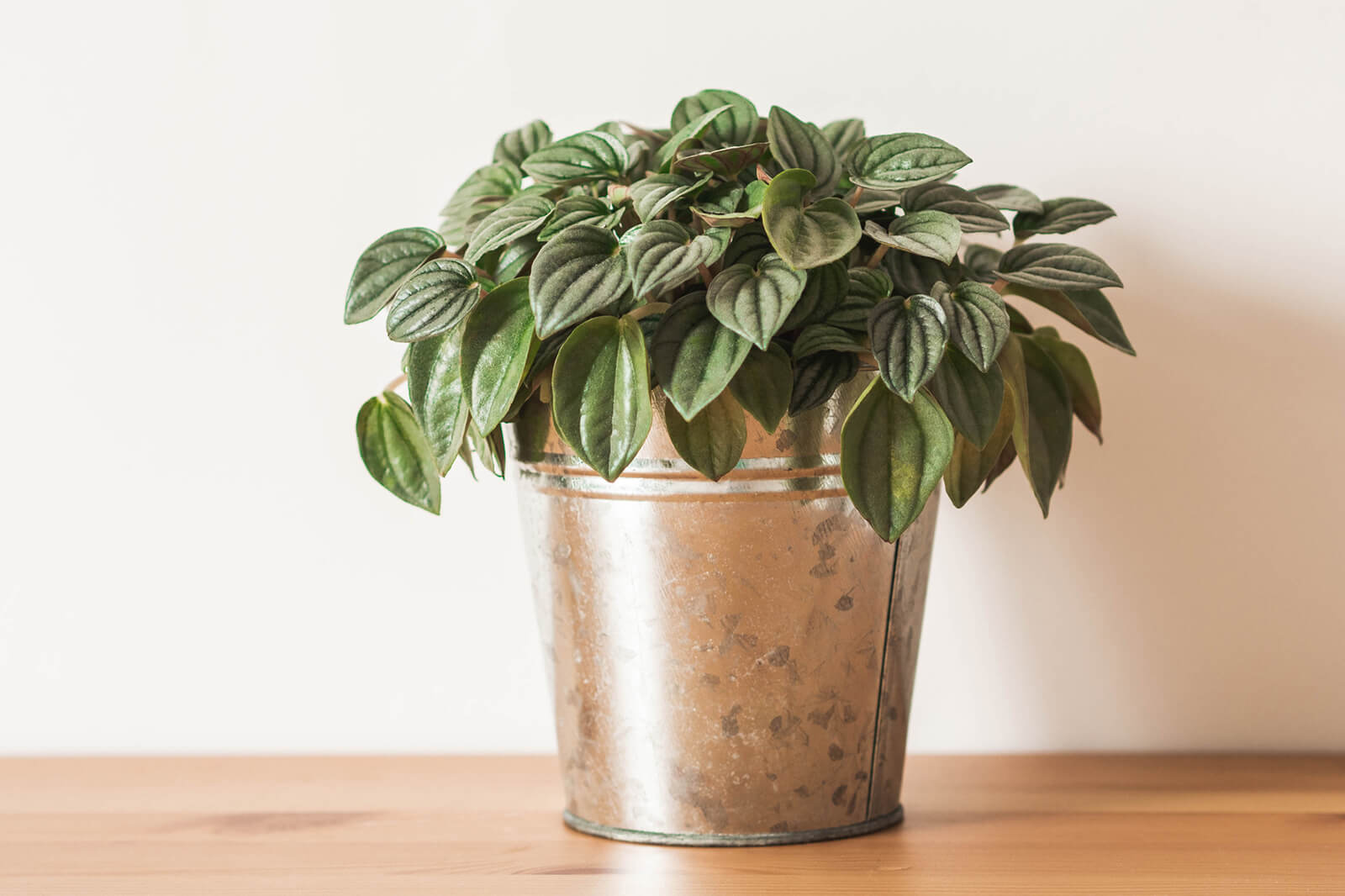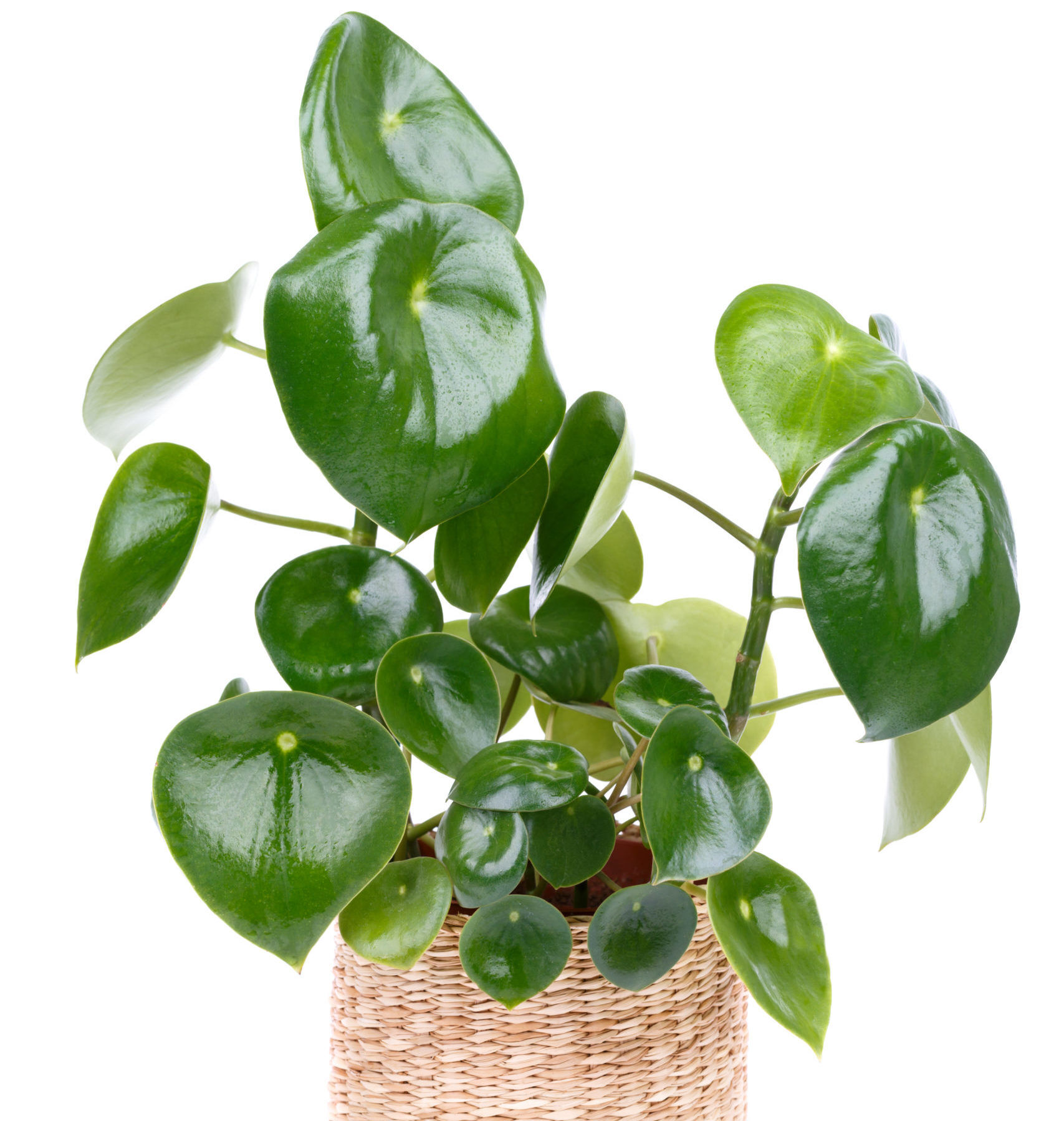The Peperomia plant comes from the same family as the peppers we use in the kitchen: the Piperaceae. It also owes its name to that: Peperomia means “looks like peppers”. In German, this plant is called Zwergpfeffer, or, Dwarf pepper.
Even though no real peppers grow on it, we are only too happy to bring these plants into the house. Peperomia has many different species with beautiful leaves, each with its own color, shape and pattern.
Originally the Peperomia occurs in several places in tropical areas. Most species come from South America. Here the plants grow mainly in shady places under large trees. Even though they are used to the tropical climate, there are quite a few species that also do well in Dutch living rooms.
Table of Contents
Peperomia species
In the wild there are more than 1500 species. A number of them are suitable for keeping in the Dutch climate. We have a varied range here with a choice of colors and sizes.
Although they often do not look very similar, they do come from the same family. They have the same way of flowering. They also remain quite small: no larger than 30 centimeters. Of all the Peperomia species, these are the most common:
Toxic?
Is the Peperomia poisonous to cats, other animals and humans? As far as we know it is not poisonous. So you can safely bring this plant into your home. In fact. There was a study done in 2012 on the nutrients of this plant. That study showed that the plant could still be a good source of nutrition!
Peperomia care
Habitat and light
Most Peperomias are low-growing plants that usually don’t grow taller than 30 centimeters (but most stay smaller). This makes them suitable for a table-top position. There are also hanging plants within this plant family. These also remain quite small so you can leave them on a table or desk for a long time. If the hanging plant really likes it, it can grow longer so you have to hang it up (or prune it back).
Give your Peperomia a spot where it gets lots of light. The more light the plant gets in its location, the more beautiful the colors on the leaves will develop. The more colors your plant has, the more light it gets. So a Peperomia with red leaves needs more light than a Peperomia with green leaves.
So choose a position with plenty of light, but not direct sunlight. These are tropical plants that never see direct sun because of the trees they grow under. Direct sunlight can scorch the leaves.
Watering
Many Peperomia species have thicker and meatier leaves than you would expect from a houseplant. They almost look like succulents! And they also have that property: Peperomias can store water in their leaves. This allows them to survive for a longer period of time without being watered.
Do not water your plant again until the soil has almost completely dried out. You can easily check this by sticking your finger into the soil. If soil sticks to your finger, the soil is still wet and you should wait a while. When the soil is dry you can water it. It is better to water a little too little than too much. Too much water can cause mold to grow on the roots.
One way to dry the soil faster is to put a layer of hydro grains in the bottom of the pot. This allows the water to sink through the soil, get between the hydro grains, and flow out of the pot.
Soil
The Peperomia grows in the wild on fallen trees whose bark is already crumbling, or even rotting a bit. This is similar to the growing conditions of an Orchid. Therefore, choose a soil that mimics this need. Potting soil for Orchids works just fine. It is airy for the roots and drains moisture well.
Pot
Most people have their plants in a pot (even though terrariums are also common). Choose a pot that mimics the plant’s natural habitat as closely as possible.
An Orchid pot is perfect. This one has holes on the bottom where the water can easily pass through. A terracotta pot is also good. This one is porous and keeps the soil from getting too wet.
Other people choose to plant the Peperomia in a plastic growing pot. This growing pot then goes back into the decorative stone pot. This also allows the water to flow out of the pot after watering.
Pruning
Pruning the Peperomia is not necessarily necessary to keep the plant healthy. You can, however, choose to keep it in shape. Important is a sharp pair of pruning shears. With blunt pruning shears you will make unnecessary wounds to the plant.
Choose a time in early spring. Then the plant starts the growing season and can quickly recover from the pruning. Take off as much of the ends until you are satisfied. You’ll see that your plant will quickly create new shoots. If all goes well, pruning will make the plant fuller and more beautiful! In addition, you can use the cut pieces again. Read more about Peperomia cuttings.
Humidity
Many houseplants originate from tropical areas. So does the Peperomia. Most tropical houseplants get brown edges on their leaves because the humidity here is much lower than in their natural growing areas. Fortunately, this does not apply to Peperomias! These plants come from areas with very high humidity, but they also tolerate the drier air of our climate just fine. So for these plants, you don’t need to pay attention to increasing humidity.
Plant food
A houseplant in a pot is nice, but it requires some extra attention compared to a plant in the open ground. In a pot, the plant is completely dependent on the nutrients you give it. If you have used fresh soil when repotting, the plant can survive for a few months, but after that it is really finished.
If you do not give it any nutrition you will notice a slower growth, yellow spots on the leaves or even the complete death of the plant. Therefore, meet the needs of the plant and give houseplant nutrition during the growth phase. This runs from the beginning of spring until the end of autumn
You can tell when new leaves appear on the plant in spring. Then it is time to start feeding. As soon as the plant stops growing and enters the resting phase, you also stop adding nutrition.
Temperature
These plants can rightly be called strong and easy houseplants. When it comes to temperature there are not many things to take into account. The only thing is that the Peperomia does not like sudden temperature changes. These can be caused by a radiator, air conditioning or draught for example.
Above you have been able to read what a great houseplant these are. There are many varieties available, but where is the best place to buy a Peperomia? Below a button to the current product range on Bol.com. On that website many plant sellers place their offerings. So you can clearly compare.
Frequently asked questions and problems
Can this plant purify the air?
Yes it can. These plants can remove harmful substances from the air, especially the substance formaldehyde. That sounds like a big advantage, but it’s actually not that big of a deal. The leaves are very good at purifying the air, better than other houseplants, but the leaves are small. The larger the leaf area, the more air the plant can purify. So in this area, you’ll have more with a plant that doesn’t purify as well, but has much larger leaves. Or you just need to get lots of Peperomias in the house 😉
Can this plant flower?
If you take good care of it, and the plant is happy with it, it can flower in spring and summer. All Peperomia species have similar flowers: long stems that grow far above the plant. On those stems are tiny flowers. Usually they are odorless.
You could say that the flowers are not very impressive, especially compared to other houseplants. That’s not a bad thing because the beautiful leaves of these plants more than make up for that.
Why do the leaves fall off the plant?
Leaf drop is usually the result of root rot. Rotten roots can no longer do their job: bring nutrients to the plant. This results in falling leaves.
Root rot occurs because the plant is always standing in soggy soil. Remove the plant from the pot and replace the soil. To prevent the problem in the future, make sure you have good drainage. Drill a hole in the bottom of the pot so the water can drain away.
Also, you may need to water less. Do not water until the top part of the soil has dried out, not before.
What are those brown spots on the leaves?
Brown spots on the leaves are always a problem and you need to find out the cause. Possible causes:
- Very dry air. Although this little plant can handle drier air just fine, there are limits. Is your plant perhaps next to a radiator?
- Not enough water. Read the care tips about the right amount and frequency of watering your Peperomia.
- Direct sunlight. In the morning this is fine, then the sun is not yet hot. In the afternoon, however, this can cause leaf burn, resulting in brown spots.
This can be a tricky one because the cause is too much or too little water. Too much water causes root rot and this can cause the plant to droop. Too little water causes thirst and has the same result. Check the soil before giving lots of water or no water at all.
Summary
| Name | Peperomia |
| Place of standing | Indirect light |
| Water | Normal |
| Toxic? | No |
FAQ
Are Peperomia plants air purifiers?
Peperomia plants grow very slowly and thrive in low light and cramped space. It’s also an excellent air purifier.
Does peperomia like direct sunlight?
How much sunlight does a peperomia need? Most varieties of Peperomia plants prefer medium to bright indirect light, but can tolerate low indirect light. Peperomia plants are not suited for intense, direct sun.
Is Peperomia a good luck plant?
This year’s lucky plant is the baby rubber plant (Peperomia obtusifolia). The baby rubber plant is considered lucky because it is easy to cultivate and maintain, and because its big, broad leaves resemble coins. It’s the lucky plant for 2022 for many reasons, the most important of which is that it’s easy to care for.
Are peperomia easy to care for?
Mostly all of the peperomias are considered easy care indoor plants because they do not require a lot of water. They thirst, instead, for brightly lit rooms where they can grab all of the indirect sunlight they need to grow.
What is peperomia plant good for?
It’s used as medicine and differs from one culture to another. It is frequently taken to soothe upset stomachs, treat acne and boils, and as a dressing for wounds. The leaves, stems, and roots have anti-inflammatory, anti-fungal, and analgesic properties. The plant is used fresh or dried.



